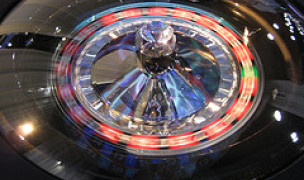 20 Terms
20 TermsHome > Industry/Domain > Biology > Immunology
Immunology
Immunology is the study of the structuree and function of the immune system which is responsible for the protection from invading foreign macromolecules or organisms. It is a broad branch of biomedical science that covers the study of all aspects of the immune system in organisms. It deals with the physiological functioning of the immune system in both healthy states and immunological disorders (autoimmune diseases, hypersensitivities, immune deficiency, transplant rejection); the physical, chemical and physiological characteristics of the components of the immune system in vitro, in situ, and in vivo.
Industry: Biology
Add a new termContributors in Immunology
Immunology
Fas ligand (FasL)
Biology; Immunology
A cell-surface member of the TNF family of proteins. Binding of Fas ligand to Fas triggers apoptosis in the Fas-expressing cell.
fragment, crystallizable (FC)
Biology; Immunology
Fragment of antibody without antigen-binding sites, generated by cleavage with papain; the Fc fragment contains the C-terminal domains of the domains of the immunoglobulin heavy chains.
Fc receptor (FcR)
Biology; Immunology
A receptor on a cell surface with specific binding affinity for the Fc portion of an antibody molecule. Fc receptors are found on many types of cells.
Fcε receptor (FcεR)
Biology; Immunology
A mast cell and leukocyte receptor for the Fc region of IgE. When immune complexes bind to Fcε receptors, the cell may respond by releasing the mediators of immediate hypersensitivity, such as ...
FK506, or tacrolimus
Biology; Immunology
is an immunosuppressive ploypeptide drug that inactivates T cells by inhibiting signal transduction from the T-cell receptor. FK506 and cyclosporin A are the most commonly used immunosuppressive ...
fluorescein isothiocyanate (FITC)
Biology; Immunology
A fluorescent dye (a fluorchrome) which emits a yellow-green color and can be conjugated to antibody or other proteins.
fluorescence microscopy
Biology; Immunology
A microscope method which uses ultraviolet light to illuminate a tissue or cell stained with a fluorochrome-labeled substance such as an antibody against an antigen of interest in the tissue.

